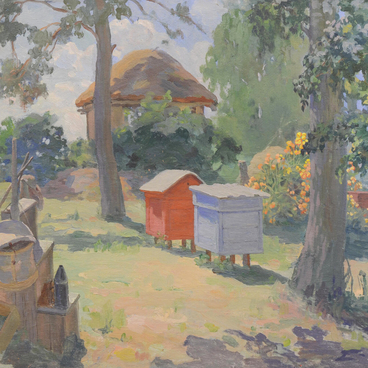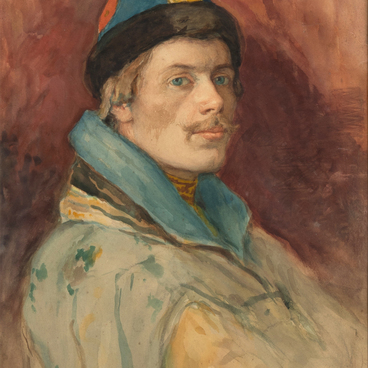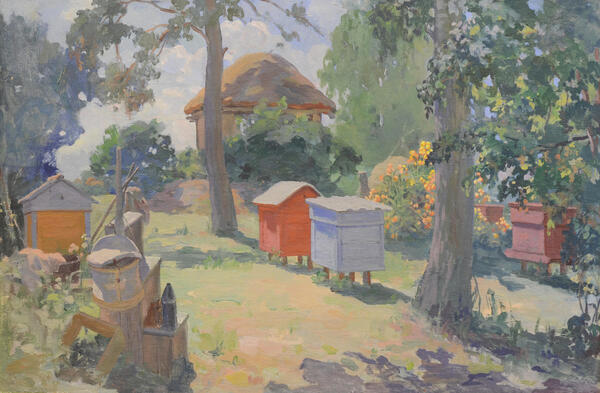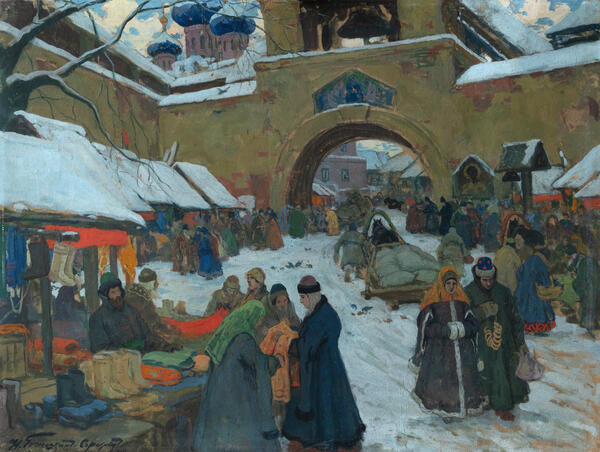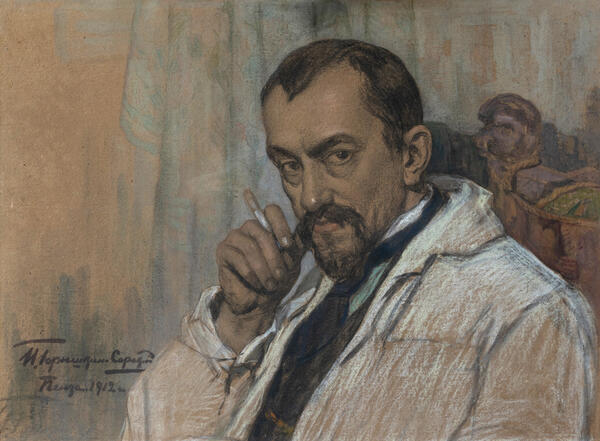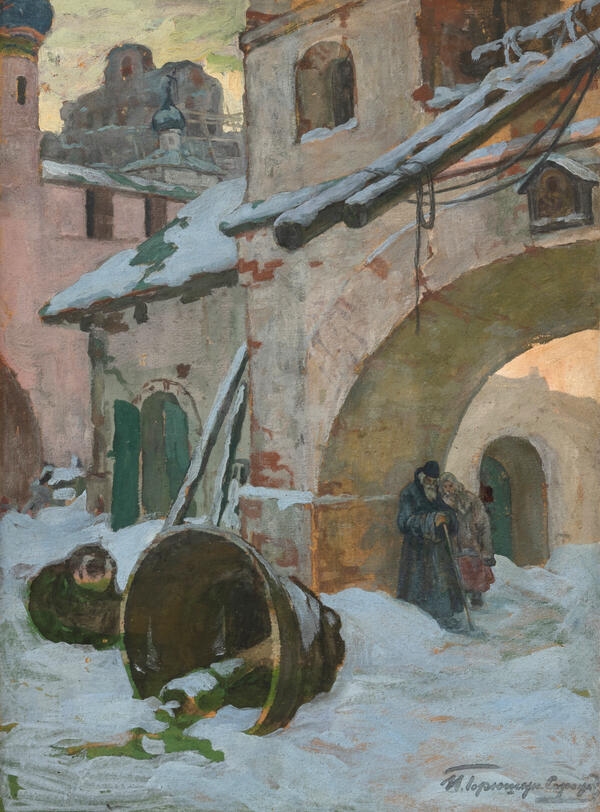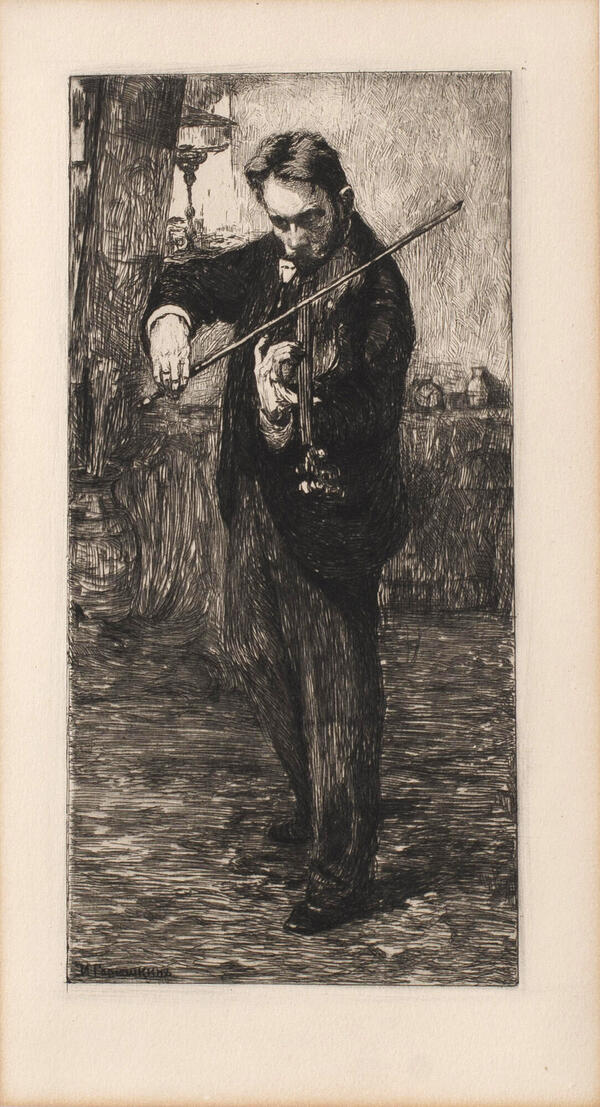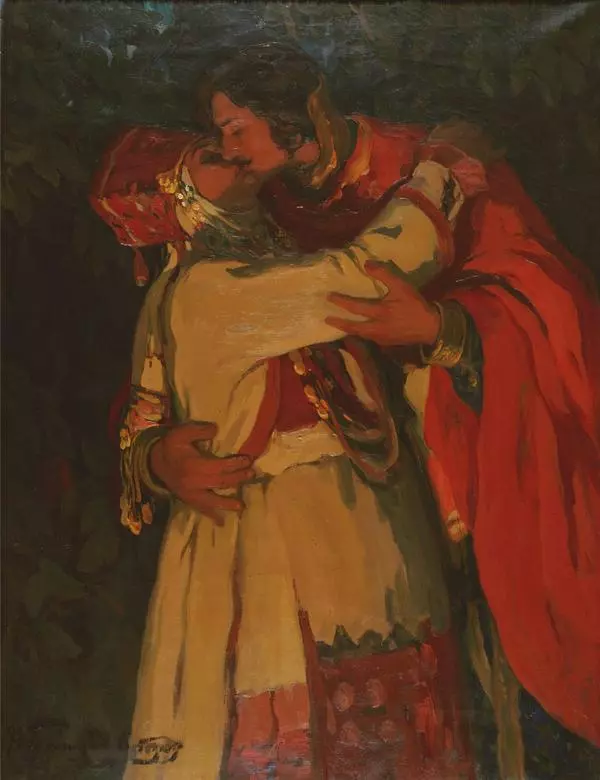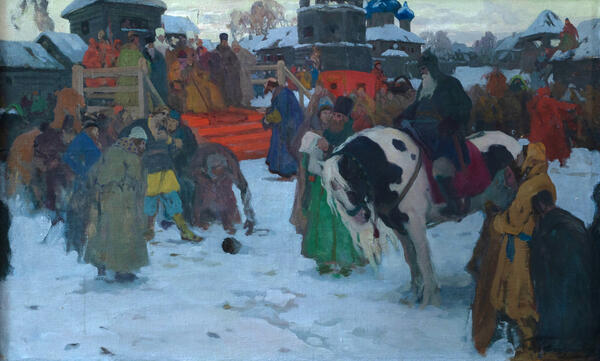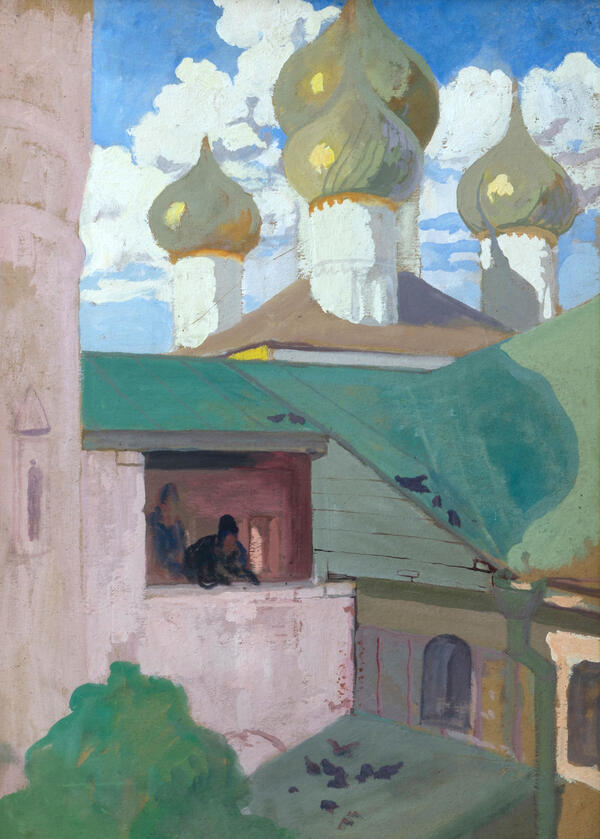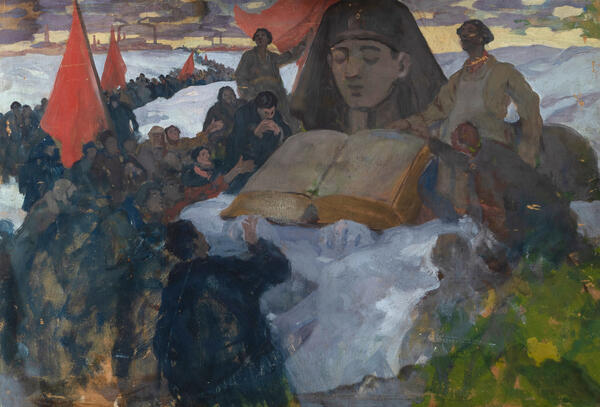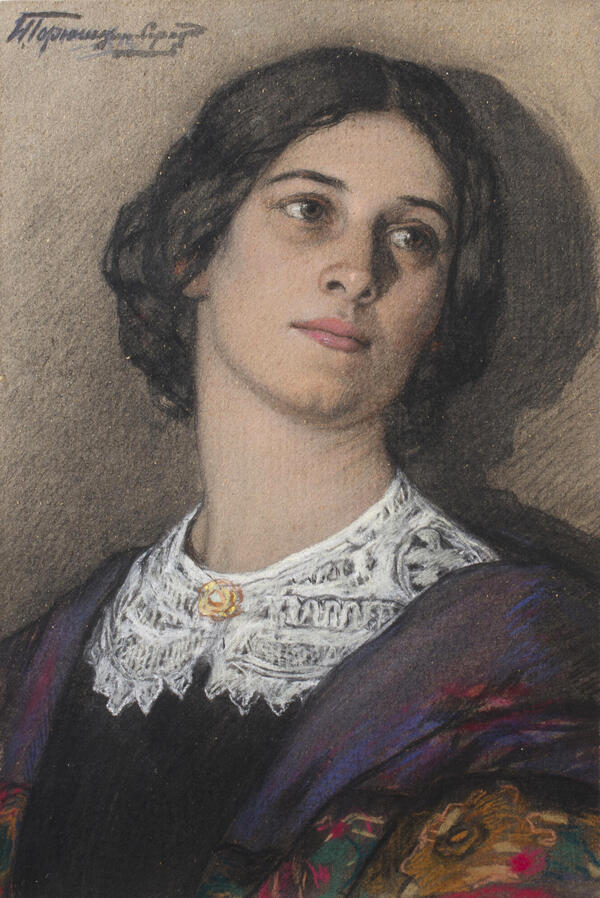In 1902, Ivan Silych Goryushkin-Sorokopudov was getting close to the end of his studies at the Academy of Arts. His teacher Ilya Efimovich Repin came to his studio and praised his sketch of the historical painting “Yaroslavna’s Lament”, advising him to enter it in a competition. He was greatly surprised when his student presented completely different paintings.
As a result of constant doubts and having to choose between modernity and the past, the artist submitted two paintings to the competition. One explored history — “The Uglich Case”, while the other was dedicated to a modern theme — “A Concert in Pavlovsk”. Pavlovsk, a suburb of Saint Petersburg, made a great impression on the artist. It was there that he heard works by Richard Wagner, Johann Strauss II, and many other composers.
Eventually, Ivan Goryushkin-Sorokopudov used the painting “A Concert in Pavlovsk” as his graduation work. The artist conveyed the emotions of the audience very well. The image of the main character was based on his wife Klavdiya Petrovna. The painter emphasized her figure. He captured the moment during an intermission at a concert in Pavlovsk, with young men in top hats and officers flirting with women.
Initially, “A Concert in Pavlovsk” was kept at the artist’s studio in Ivanovka. However, after his death in 1954, the painting, along with other works, was moved to the Art Gallery. For a long time, it was not framed and was stored rolled around a tube. It was not shown to museum visitors. Over time, restoration became necessary. It was conducted by Olga Konstantinovna Karasyova and students from the Penza Art College named after Konstantin Apollonovich Savitsky.
The restoration of this
painting presented a challenge. While it was stored in a rolled-up position,
its lower edge had become severely deformed and exposed to moisture. During the
initial stages of restoration, charcoal sketches were found on top of the painted
layer. It is possible that the artist intended to make some changes to the
painting. The restorers reinforced the paint layer and filled in any areas
where paint had been lost.

